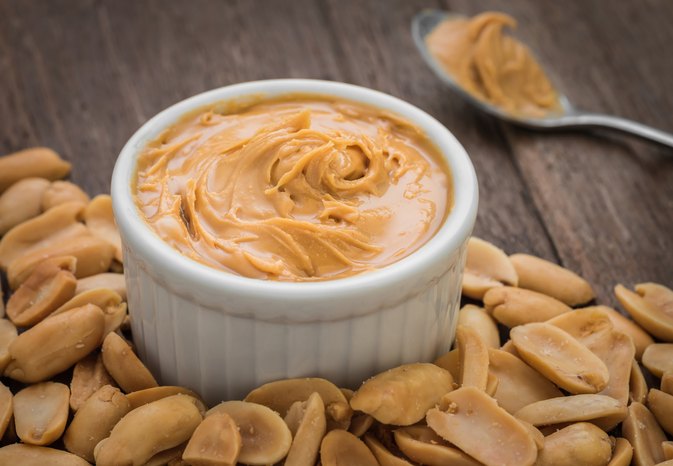
Implementing a digital patient assistance program significantly reduces the administrative burden often associated with offline PAPs. Healthcare providers can easily manage several patients on different types of treatments through a single online platform.
What is a patient assistance program (PAP)?
Patient assistance programs (PAPs) help people with no health insurance and those who are underinsured afford medications. These programs are managed by pharmaceutical companies, nonprofits, and government agencies. PAPs may cover the full cost of medications or provide a discount.
How do I sign up for a medication assistance program?
To sign up, you will either call the program or register online. You will need to submit forms like your tax documents and proof of residence to prove your eligibility. Most programs also require your healthcare provider to fill out a form. Once you are enrolled, there may be limits on how much medication you can get or how long the program lasts.
What is an example of a drug assistance program?
For example, the manufacturer GlaxoSmithKline offers an assistance program for its medications Benlysta and Nucala. In their qualification section, they list what your maximum monthly gross income must be under, which is dependent on your household size and where you live. What are some examples of these programs?
What is drug assistance?
Who sponsors drug assistance programs?
Why are patients more likely to abandon their prescriptions at the pharmacy counter?
Can patients receive medication for little or no cost?

What is PSP patient support program?
Patient Support Programs (PSPs) are an umbrella term to describe initiatives led by pharmaceutical companies to improve access, usage, and adherence to prescription drugs. These programs can have a financial component, support clinical investments, focus purely on education, or a combination.
What is patient support?
What are Patient Support Services? • Typically equated with Patient Assistance Programs (“PAPs”), which provide financial assistance to patients: • assistance with copayments, • coinsurance, deductibles, and • other health-related expenses.
Is patient assistance program legitimate?
Patient assistance programs (PAPs) are usually sponsored by pharmaceutical manufacturers and are promoted as a safety net for Americans who have no health insurance or are underinsured.
How does a patient support program work?
A patient assistance or support programs (PAPs or PSPs) exist to get you timely access to medication and to help you stay on track of your therapy. Being diagnosed with a complex disease or condition may come with unexpected financial burden and a need to better understand treatment options and next steps.
What does a patient support specialist do?
Patient support specialists are healthcare professionals who work with patients and their families to ensure that they have the resources they need to make informed decisions about their health. They may also help coordinate patient care between different medical professionals, hospitals, or other facilities.
What are examples of support services?
Supportive Services - Examples and Resource Guidefood pantries and soup kitchens.homeless shelters.substance abuse/addiction counseling.domestic abuse intervention.parenting resources.clothing assistance.free and low cost medical clinics.legal aid providers.
Why are patient support programs important?
Appropriate patient support can help patients through the on-boarding and initial treatment period, improve long-term adherence, reduce discontinuation, and ultimately, deliver a better health outcome.
What is patient support group meeting?
Patient Support Group (PSG) is a community-based intervention which is currently being implemented in Tamil Nadu for strengthening communitization efforts for better NCD control including compliance to treatment for common NCDs especially Hypertension and Diabetes.
Patient Assistance Programs - Frequently Asked Questions
What steps do you need to take? Yes. Although eligibility differs from program to program, they all have three specific criteria in common. Income: To qualify for any patient assistance program, your total household income must be less than 200% of the Federal Poverty Level. Prescription Coverage: Prescription assistance programs require that you do not currently subscribe to private or public ...
Patient Assistance Programs - Prescription Drugs for the Uninsured
Trisha Torrey is Every Patient's Advocate. She is a newspaper columnist, radio talk show host, national speaker, and the guide to patient empowerment at About.com.
Patient Assistance Programs & Prescription Assistance Programs
Discussion. There are several types of PAPs. There are ones that are designed for patients that do not have insurance, others for individuals whose insurance co-payment amounts are prohibitively expensive, and still other programs to assist with specific types of insurance, such as Medicare Part D.
Patient Assistance Programs: How To Get Help Paying For Medications
A patient’s out-of-pocket costs for medications could be another factor to determine your eligibility for patient assistance. Even with health coverage, some prescriptions are still difficult to afford, especially Tier 3 and 4 drugs. Editor’s note: There are 4 tiers of prescription drugs. Tier 1 is the least expensive and 4 is the most expensive and used to cover very serious medical ...
What Are Patient Assistance Programs? - GoodRx
Patient assistance programs are usually sponsored by pharmaceutical companies and promoted as a safety net for those without health insurance. Learn how they work, their benefits and downsides, and how to find patient assistance programs for medications.
Patient Assistance Programs: The Good, the Bad, and the Ugly
We are all familiar with the patient assistance programs (PAPs) primarily sponsored by drug manufacturers or a partner organization and generally consider them a good thing for assisting patients with high out-of-pocket costs for expensive specialty drugs, especially in this era of high-deductible insurance plans.
What is drug assistance?
Drug assistance programs—another term for patient assistance programs—can also be offered by state programs or independent third-party nonprofits/charitable organizations. Whether a patient qualifies for these programs will depend on their insurance and the prescribed therapy. Patients typically qualify for these programs if they do not have ...
Who sponsors drug assistance programs?
Drug assistance programs are usually sponsored by life sciences organizations (manufacturer- sponsored), non-profit or charitable foundation-sponsored, or a combination of the two. Usually, they also fall into these categories:
Why are patients more likely to abandon their prescriptions at the pharmacy counter?
As out-of-pocket costs increase, patients are more likely to abandon their prescriptions at the pharmacy counter. To avoid this outcome and improve patient adherence, pharmaceutical manufacturers are more likely to sponsor patient assistance programs.
Can patients receive medication for little or no cost?
Patients who qualify for patient assistance programs can receive medication for little or no cost, helping the most in-need patients gain access to therapy if they cannot afford the typical drug pricing.
Where do patient assistance programs come from?
PAPs are most often sponsored by pharmaceutical companies. There are also state programs and nonprofit-sponsored programs.
How to sign up for a med program?
To sign up, you will either call the program or sign up online. You will need to submit forms like your taxes and residence status to prove your eligibility. Most programs also require your health provider to fill out a form. Once you apply and enroll, there may be limits on how much medication you can get or how long the program lasts.
Can a patient assistance card help you?
Like manufacturer copay cards, patient assistance programs have received some criticism. But, they can and do help you if you are struggling to afford your medications. Keep reading to find out more about PAPs.
Does GlaxoSmithKline offer assistance?
For example, GlaxoSmithKline offers an assistance program for its medications Benlysta and Nucala. Here, under their qualification section, they show what your maximum monthly gross income must be under, depending on your household size and where you live.
Where do patient assistance programs come from?from goodrx.com
PAPs are most often sponsored by pharmaceutical companies. There are also state programs and nonprofit-sponsored programs.
What is drug assistance?from assistrx.com
Drug assistance programs—another term for patient assistance programs—can also be offered by state programs or independent third-party nonprofits/charitable organizations. Whether a patient qualifies for these programs will depend on their insurance and the prescribed therapy. Patients typically qualify for these programs if they do not have ...
What insurance do you need to get medical assistance?from aafa.org
Patient must be insured by Medicare, Medicaid or military benefits, and insurance must cover the medicine for which patient seeks assistance
What is a senior program?from aafa.org
Programs are for seniors and/or people with certain chronic conditions; The programs assist low-income seniors and adults with disabilities in paying for their prescription drugs
What is the purpose of the asthma coupons?from aafa.org
They compile coupons and prescription assistance information to help patients and families find free or reduced-cost asthma medicines.
How to sign up for a med program?from goodrx.com
To sign up, you will either call the program or sign up online. You will need to submit forms like your taxes and residence status to prove your eligibility. Most programs also require your health provider to fill out a form. Once you apply and enroll, there may be limits on how much medication you can get or how long the program lasts.
How to contact Social Security for extra help?from aafa.org
Extra Help (Social Security Administration) 800-772-1213. (TTY 800-325-0778) Check with organization for more details. Yes, for eligible individuals. To qualify you must receive Medicare, have limited resources and income, and live in one of the 50 states or the District of Columbia.
What is drug assistance?
Drug assistance programs—another term for patient assistance programs—can also be offered by state programs or independent third-party nonprofits/charitable organizations. Whether a patient qualifies for these programs will depend on their insurance and the prescribed therapy. Patients typically qualify for these programs if they do not have ...
Who sponsors drug assistance programs?
Drug assistance programs are usually sponsored by life sciences organizations (manufacturer- sponsored), non-profit or charitable foundation-sponsored, or a combination of the two. Usually, they also fall into these categories:
Why are patients more likely to abandon their prescriptions at the pharmacy counter?
As out-of-pocket costs increase, patients are more likely to abandon their prescriptions at the pharmacy counter. To avoid this outcome and improve patient adherence, pharmaceutical manufacturers are more likely to sponsor patient assistance programs.
Can patients receive medication for little or no cost?
Patients who qualify for patient assistance programs can receive medication for little or no cost, helping the most in-need patients gain access to therapy if they cannot afford the typical drug pricing.
